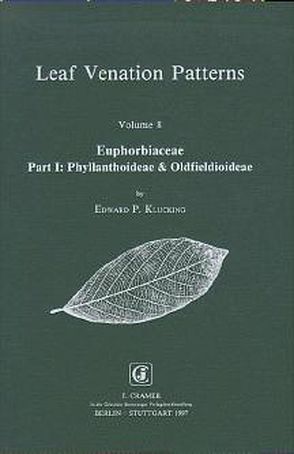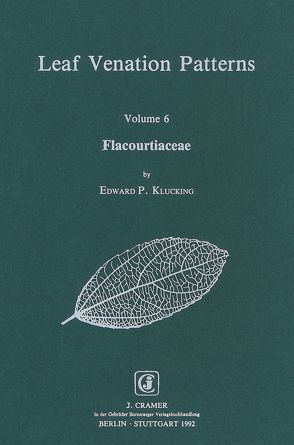
This volume deals with the leaf venation patterns of plant families from the orders Violiales and Passifloriales. These orders have nine families and five families respectively. Leaves from five families in the Violiales and two families in the Passifloriales were collected for clearing and describing. The family Flacourtiaceae consisting of 93 genera and 1000 species was targeted many years ago for describing because of the occurrence of Banara leaves with acrodromal secondary venation in the fossil record in Washington. It was supposed that the family might have a large number of species with acrodromal secondary venation. It was somewhat surprising after clearing 312 species of the Flacourtiaceae to find that around 65% of the species had pinnate venation and only 15% or so had acrodromal venation. The leaves of 123 species of the Passifloraceae were also cleared, most of these belonging the genus Passiflora. Many of these leaves had actinodromous secondary venation. This pattern is like acrodromal venation except the secondary veins departing from base of the leaf are directed more laterally than distally as is the case in acrodromal venation. This is the first time this pattern has occured or been described in the series. It was also interesting to note that the diverse leaf shapes of Passiflora did not alter the basic patterns of secondary venation beyond description.
Aktualisiert: 2022-05-18
> findR *
The Euphorbiaceae is a large family of dicot angiosperms consisting of 326 genera and 7750 species (Mabberley, 1987). The family is nearly cosmopolitan in distribution and most are shrubs or trees, many xerophytic in habit. Leaves of more than 1700 species were collected from the Rijksherbarium at Leiden and the Missouri Botanical Garden Herbarium at St. Louis. These leaves were cleared and photographed and arranged for description according to the classification proposed by Webster (1975). In this classification the family is divided into 5 subfamilies and 52 tribes. Venation patterns of slightly more than 700 species from the first two subfamilies, consisting of 17 tribes, will be described in this volume.
Aktualisiert: 2022-06-24
> findR *
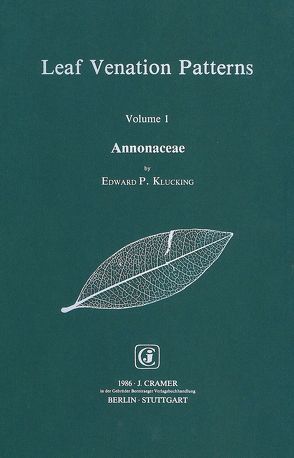
Leaves are the most common and visible organs of living plants, herbarium specimens, and fossil remains and their general patterns of venation are easily recognized and seemingly quite distinct. E.J.H. Corner (1968) wrote that, "Patterns of veins differ greatly according to the kinds of plants and, if they were properly understood and could be described accurately, they would be found as characteristic of plant species as fingerprints of human beings." This ideal is a long way from being realized and may not prove to be feasible. The venation of individual specimens, particularly fossil ones, has long been used for species identification. However, in order to determine how reliable venation patterns are for identifying plants the different kinds of existing patterns should be worked out and their distribution among the angiosperms be determined. As a means for working out the existing kinds of venation patterns one can use either a developmental approach or an evolutionary one. In the developmental approach the venation patterns are considered to be products of stages of individual maturation whereas in the evolutionary approach they are considered to represent phases of taxon development. The developmental approach is here for describing the venation patterns of the Annonaceae.
Aktualisiert: 2022-03-18
> findR *
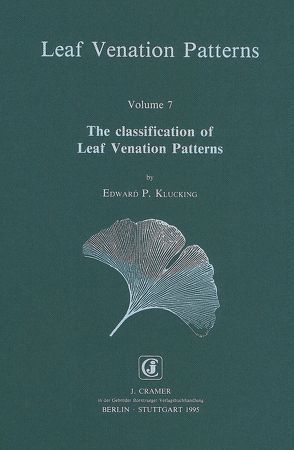
It is clear that there are different patterns of leaf venation. It is also clear that similar patterns occur in seemingly unrelated taxa and that different patterns are found in a single taxon. It seems necessary to have these patterns organized into some sort of classification system in order to determine the relationships between the various patterns. Several classifications of venation patterns have been proposed in the past. Constantin von Ettingshausen and Alois Pokorny proposed one in 1856. It was based on the relative strength of the veins and their distribution in the leaf blade. They defined seven basic venation patterns according to the number of primary veins and the number, orientation, and behavior of the secondary veins. This system has much to recommend it but there are some drawbacks. Some leaves have no discernable primary vein and most have only one primary vein. This single primary vein forms the midrib of the leaf and secondary veins of equal or slightly less strength branch from it. On the leaves considered to have more than one primary vein in the Ettingshausen and Pokory system, examination shows that those "primaries" other than the midvein actually branch from the midvein. Ettingshausen and Pokorny?s classification system does not attempt to explain the relationships between the various patterns.
Aktualisiert: 2015-10-07
> findR *
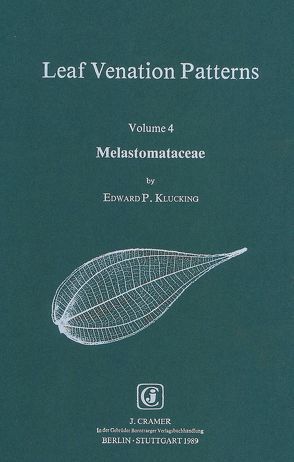
The leaf venation patterns of the Melastomataceae and the Memecylaceae make up the fourth volume in a series on the venation patterns of angiosperm families. As the leaves of more plant families are examined, terms used in describing the venation and ways of explaining these venation patterns are modified or changed. For instance, attempts to use terms like secondary veins or tertiary veins for describing become difficult when dealing with the acrodromal venation of the Melastomataceae. Acrodromal veins are veins of secondary strength which depart from the primary vein or midvein and are directed apically rather than laterally. In most leaves with acrodromal venation there are pinnate veins, weaker than the acrodromal veins, but seemingly of secondary strength, departing from the midvein and running at high angles to connect with the acrodromal veins. If the acrodromal veins are considered to be the secondary veins of a pattern, then these pinnate veins of lesser strength must be the tertiary veins and the veins of lesser strength would be the quaternary veins and so on. If point of origin is used to designate the veins rather than strength, strong veins coming from the primary vein would be secondary veins and many of the leaves with acrodromal venation would have two to three kinds of secondary veins.
Aktualisiert: 2022-05-06
> findR *
MEHR ANZEIGEN
Bücher von Klucking, Edward P
Sie suchen ein Buch oder Publikation vonKlucking, Edward P ? Bei Buch findr finden Sie alle Bücher Klucking, Edward P.
Entdecken Sie neue Bücher oder Klassiker für Sie selbst oder zum Verschenken. Buch findr hat zahlreiche Bücher
von Klucking, Edward P im Sortiment. Nehmen Sie sich Zeit zum Stöbern und finden Sie das passende Buch oder die
Publiketion für Ihr Lesevergnügen oder Ihr Interessensgebiet. Stöbern Sie durch unser Angebot und finden Sie aus
unserer großen Auswahl das Buch, das Ihnen zusagt. Bei Buch findr finden Sie Romane, Ratgeber, wissenschaftliche und
populärwissenschaftliche Bücher uvm. Bestellen Sie Ihr Buch zu Ihrem Thema einfach online und lassen Sie es sich
bequem nach Hause schicken. Wir wünschen Ihnen schöne und entspannte Lesemomente mit Ihrem Buch
von Klucking, Edward P .
Klucking, Edward P - Große Auswahl an Publikationen bei Buch findr
Bei uns finden Sie Bücher aller beliebter Autoren, Neuerscheinungen, Bestseller genauso wie alte Schätze. Bücher
von Klucking, Edward P die Ihre Fantasie anregen und Bücher, die Sie weiterbilden und Ihnen wissenschaftliche Fakten
vermitteln. Ganz nach Ihrem Geschmack ist das passende Buch für Sie dabei. Finden Sie eine große Auswahl Bücher
verschiedenster Genres, Verlage, Schlagworte Genre bei Buchfindr:
Unser Repertoire umfasst Bücher von
- Klückmann, Harald
- Klückmann, Harald
- Klückmann, Jan
- Klückmann, Jan
- Klückmann, Matthias
- Klückmann, Matthias
- Klückmann, Thomas
- Kluckner, Andrea
- Kluckner, Florian
- Kluckow, Christoph
Sie haben viele Möglichkeiten bei Buch findr die passenden Bücher für Ihr Lesevergnügen zu entdecken. Nutzen Sie
unsere Suchfunktionen, um zu stöbern und für Sie interessante Bücher in den unterschiedlichen Genres und Kategorien
zu finden. Neben Büchern von Klucking, Edward P und Büchern aus verschiedenen Kategorien finden Sie schnell und
einfach auch eine Auflistung thematisch passender Publikationen. Probieren Sie es aus, legen Sie jetzt los! Ihrem
Lesevergnügen steht nichts im Wege. Nutzen Sie die Vorteile Ihre Bücher online zu kaufen und bekommen Sie die
bestellten Bücher schnell und bequem zugestellt. Nehmen Sie sich die Zeit, online die Bücher Ihrer Wahl anzulesen,
Buchempfehlungen und Rezensionen zu studieren, Informationen zu Autoren zu lesen. Viel Spaß beim Lesen wünscht Ihnen
das Team von Buchfindr.

